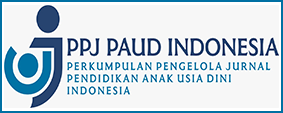
Author
Feby Kharisna(1
Pendidikan Dasar, Universitas Negeri Padang, Indonesia(1)
Pendidikan Dasar, Universitas Negeri Padang, Indonesia(2)
| Article Analytic |
Published : 2023-03-27
Article can trace at:
 Article Metrics
Article Metrics
Abstract Views: 231 times
PDF Downloaded: 115 times
Abstract
The presence of Buku Sekolah Elektronik (BSE), an electronic textbook developed by the Ministry of Culture and Education, is one example of the application of TI in education. Observation and the requirements of instructors and students. The purpose of this research is to make and know the validity of a Project Based Learning-based e-book featured by a kvisoft flipbook maker in the third grade of elementary school. This research was conducted using Research and Development (R&D) method and Model Pengembangan ADDIE. Researchers observed and interviewed teachers and third-grade students from each school as many as 3 people were selected for research. By using the data from observation and interviews, the researcher designed the product to fulfill the needs of those schools. In the 'development' session, the researcher developed the raw product so that it could be used by the teacher and students. During the "implementation" session, the students evaluated the product's efficacy. To create the ideal product, the absence of a product was remedied. This procedure is referred to as "assessment." Experts must examine the product's legitimacy before the efficacy of the product is evaluated. There is the issue of the images, substance, and language's legitimacy. The test's findings indicate that the product is quite legitimate in terms of both language and substance, while the results for the visuals are also reliable. It can be concluded that the product, an e-book, is very valid and it can be used as an alternative material in teaching
Keywords
References
Amini, R., Universitas, F., Padang, N., Hamka Air, J., & Padang, T. (2015). Peran Biologi dan Pendidikan Biologi dalam Menyiapkan Generasi Unggul dan Berdaya Saing Global. Prosiding Seminar Nasional Pendidikan Biologi 2015. https://biology.umm.ac.id/files/file/521-529%20Hening%20Widowati.pdf
Andrew Mamahit, J., Corebima Aloysius, D., & Suwono, H. (2020). Efektivitas Model Project-Based Learning Terintegrasi STEM (PjBL-STEM) terhadap Keterampilan Berpikir Kreatif Siswa Kelas X. https://doi.org/10.17977/jptpp.v5i9.14034
Baidowi, A., & Achmad Amirudin. (2015). Pengaruh Model Pembelajaran Berbasis Proyek Terhadap Kemampuan Menulis Karya Ilmiah Geografi Siswa SMA. http://journal.um.ac.id/index.php/pendidikan-geografi/article/view/5011
Cahyadi, R. A. H. (2019). Pengembangan Bahan Ajar Berbasis Addie Model. Halaqa: Islamic Education Journal, 3(1), 35–42. https://doi.org/10.21070/halaqa.v3i1.2124
Dewi, I. D. A. W. S., & Sujana, I. W. (2022). Media Flipbook Berorientasi Pendekatan Kontekstual Pada Muatan IPS Untuk Kelas IV Sekolah Dasar. Jurnal Ilmiah Pendidikan Profesi Guru, 5(2), 244–258. https://doi.org/10.23887/jippg.v5i2.46404
Divayana, D. G. H., Suyasa, P. W. A., Ariawan, I. P. W., Mahendra, I. W. E., & Sugiharni, G. A. D. (2019). The Design of Digital Book Content for Assessment and Evaluation Courses by Adopting Superitem Concept Based on Kvisoft Flipbook Maker in era of Industry 4.0. Journal of Physics: Conference Series, 1165(1). https://doi.org/10.1088/1742-6596/1165/1/012020
Fitrianna, A. Y., Priatna, N., Afgani Dahlan, J. (2021). Pengembangan Model E-Book Interaktif Berbasis Pembelajaran Induktif untuk Melatihkan Kemampuan Penalaran Aljabar Siswa SMP. Cendekia: Jurnal Pendidikan matematika, 05(02), 1562–1577. https://doi.org/10.31004/cendekia.v5i2.653
Ghofur, A., & Kustijono, R. (2015). Pengembangan E-Book Berbasis Flash Kvisoft Flipbook Pada Materi Kinematika Gerak Lurus Sebagai Sarana Belajar Siswa Sma Kelas X. Jurnal Inovasi Pendidikan Fisika (JIPF), 04(02), 176–180. https://ejournal.unesa.ac.id/index.php/inovasi-pendidikan-fisika/article/view/12374
Kantun, S., Sri, Y., & Budiawati, R. (2015). Analisis Tingkat Kelayakan Bahan Aajar Ekonomi Yang Digunakan Oleh Guru Di SMA Negeri 4 Jember. https://jurnal.unej.ac.id/index.php/JPE/article/view/3384
Koriaty, S., & Manggala, E. (2016). Penerapan Media E-Book Terhadap Minat Belajar Siswa Di Kelas X Jurusan Tkj Smk Negeri 4 Pontianak. In Jurnal Pendidikan Informatika dan Sains. 5(2). https://journal.ikippgriptk.ac.id/index.php/saintek/article/view/348
Mufit, F., Festiyed, F., Fauzan, A., & Lufri, L. (2018). Impact of Learning Model Based on Cognitive Conflict toward Student’s Conceptual Understanding. IOP Conference Series: Materials Science and Engineering, 335(1). https://doi.org/10.1088/1757-899X/335/1/012072
Murni, O. :, & Marlina, E. (2013). Kurikulum 2013 Yang Berkarakter. In JUPIIS, 5. https://doi.org/10.24114/jupiis.v5i2.1112
Nenden, N., Dandan, M., & Saraswati, L. (2017). Penerapan Media Pembelajaran Digital Book Dengan Kvisoft Flipbook Maker. Jurnal Pendidikan Fisika, V(1), 25–32. https://ojs.fkip.ummetro.ac.id/index.php/fisika/article/view/741
Puspita, G.A. (2018). Pergeseran Budaya Baca dan Perkembangan Industri Penerbitan Buku di Indonesia: Studi Kasus Pembaca E-Book Melalui Aplikasi iPusnas. Jurnal Kajian Perpustakaan dan Informasi BIBLIOTIKA : Jurnal Kajian Perpustakaan dan Informasi, 2. https://journal2.um.ac.id/index.php/bibliotika/article/view/4164
Reza Qhadafi, M. (2018). Analisis Kesalahan Penulisan Ejaan yang Disempurnakan dalam Teks Negosiasi Siswa SMA Negeri 3 Palu. Jurnal Bahasa Dan Sastra, 3(4). http://jurnal.untad.ac.id/jurnal/index.php/BDS/article/view/10525
Sari, R. T., & Angreni, S. (2018). Penerapan Model Pembelajaran Project Based Learning (Pjbl) Upaya Peningkatan Kreativitas Mahasiswa. 30(1), 79–83. https://doi.org/10.23917/varidika.v30i1.6548
Sulistya, E., Ahmad, N., & Sobri, Y. (2015). Implementasi Kurikulum 2013 Di Sekolah Dasar. Manajemen Pendidikan, 24(5), 416-423. http://ap.fip.um.ac.id/wp-content/uploads/2015/05/volume-24-no.-564-71.pdf
Susilawati, T., & Rusdinal. (2022). Pengembangan Media Pembelajaran E-Book Berbasis Blended Learning Tematik Terpadu Di Kelas Iv Sekolah Dasar. Jurnal Cakrawala Pendas, 8(2), 378–387. https://doi.org/10.31949/jcp.v8i2.2285
Talibo I. (2007). Tipe - Tipe Belajar dalam Proses Pembelajaran. Jurnal Ilmiah Iqra', 7(2). http://dx.doi.org/10.30984/jii.v7i2.612
Wibowo, E., & Pratiwi, D. D. (2018). Desimal: Jurnal Matematika Pengembangan Bahan Ajar Menggunakan Aplikasi Kvisoft Flipbook Maker Materi Himpunan. 1(2), 147–156. https://doi.org/10.24042/djm.v1i2.2279
Yuliasari, E. (2017). Eksperimentasi Model PBL dan Model GDL Terhadap Kemampuan Pemecahan Masalah Matematis Ditinjau dari Kemandirian Belajar The Effect Of PBL and GDL Model to Mathematical Problem Solving Ability Viewed From Self Regulated Learning. Jurnal Ilmiah Pendidikan Matematika), 6(1), 1–10. https://doi.org/10.25273/jipm.v6i1.1336
Refbacks
- There are currently no refbacks.

_2022_inPress.png)








